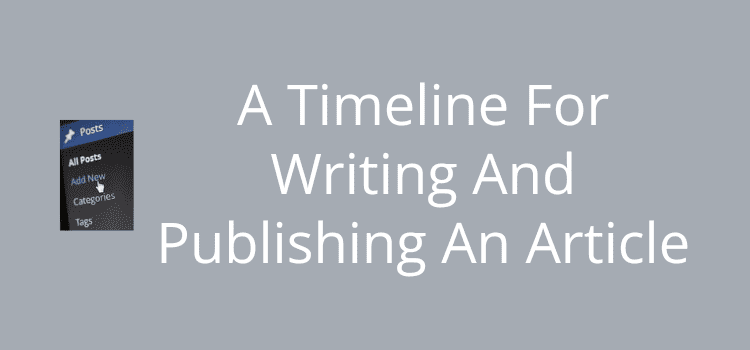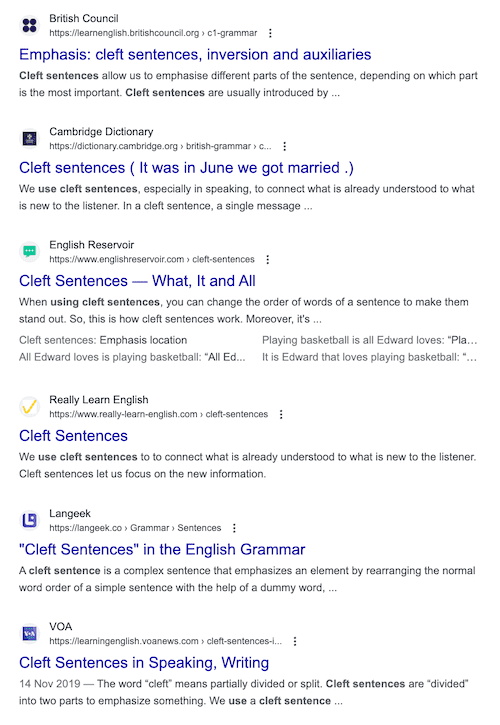
How long does it take to write a quality article? For a 1,500-word text, it generally takes three to four days to research, write, and publish an article.
Depending on the type of article, it could take longer, such as for an academic or scientific text.
For these types of articles, peer review is often necessary, which takes time.
But for general interest or content marketing articles, a few days is usually the minimum time to properly research, write, and publish a quality text.
The essentials for article publishing
When you write and publish an article, you want people to find it and read it.
The best way to achieve your aim is to use a search engine such as Google to research the popularity and competitiveness of your topic or subject.
You also want to discover the keywords or search terms that are attracting readers to existing articles.
With the information you discover, you can prepare a short list of possible titles and the key paragraph headings you will need to cover your topic fully.
The next step is to write the first draft of your text. Depending on your typing speed, it might take you two to four hours to complete a 1,500-word text.
Perhaps the following day, editing and correcting the text will take at least an hour or two.
Proofreading comes next, and if possible, by someone else.
You might also need to add internal and external links and prepare images, graphs, or tables to complement points in your text.
The last step is to format your text so it’s easy to navigate and read.
Then, you are ready to publish your article.
Your research time is high-value
Without a doubt, the more time you invest in doing your research, the better your chances are of your article being indexed by search engines.
It doesn’t matter if you post your articles on a free publishing platform, as guest posts, or on your site.
Start your research by looking for topic ideas related to your field of expertise.
When you find one, check Google or Bing to ascertain the popularity, competition, and associated keywords.
Here’s an example of my early research on the topic of cleft sentences.

You can see the indexed results are around 800,000. That’s a good number because it’s not too high, so it’s a less competitive search term.
Then, I look at the top-ranking pages.

Read a handful of the highest-ranking articles to check what points you need to cover.
Take note of the titles, text length, graphics, and keywords included in the body text.
Then, when you write your article, try to do better.
Carefully choosing your topic or subject, title, and keywords are the three steps to help your article rank.
Of course, the higher your article ranks on search engines, the more readers you will attract.
Can you write and publish articles faster?

Hardly a day goes by without news about AI-generated text and the fears writers have.
You might think it’s a quick and easy way to write and publish an article in minutes.
But the jury is still out on the effectiveness of content produced by (AI) artificial intelligence.
Regardless of how search engines respond to it, AI-generated texts have some very real downsides.
One is that AI texts so often contain incorrect or misleading facts, statistics, and data.
The second is that the writing style is bland, impersonal, and now quite easily recognized by both readers and search engines.
It means that you have to take the time to check facts and rewrite a lot of the text in your writing style.
I’ve tried at least ten times to rewrite and fact-check AI-generated articles, and every time, it took me longer than to write from scratch.
However, producing text is only one step in the process. So, using AI to write doesn’t really help speed up the process.
But that’s not to say that AI is all bad.
ChatGPT, Google Bard, and Bing Chat are all useful tools to help you with research and content ideas.
Editing and fact-checking
When your first draft is complete, check it word by word.
Look for ways you can improve the clarity, add more details, or even delete irrelevant information.
Also, double-check your facts, data, or statistics.
If possible, perhaps find a reliable source to link to that supports your information.
Make sure you break up your text with appropriate paragraph headings and split any long paragraphs into smaller chunks.
Depending on your publishing platform, you might need to create a table of contents.
With WordPress sites, a plugin can create this automatically.
But if you are publishing on other platforms, you can add it manually. The best location is often just after the introduction.
Meticulous proofreading is essential
Yes, you probably use a grammar checker, which is always a good idea.
But it is not and cannot replace careful proofreading.
If you can find someone to help you, it’s always the best way.
However, if not, take your time and carefully read your text at least three times.
Look for inconsistencies, typos, factual errors, and vague or difficult-to-read sentences.
I always proofread at least three times before I prepare and format a text for publishing.
And just to be sure, I always proofread one more time before I hit the publish button.
Formatting for your readers
White space is not wasted space.
Allow space between your paragraphs and headings and enough side margins to aid readers in scrolling on a mobile device.
Perhaps you have ads on your site. Check to make sure they are located in logical places, such as between sections and not within the body text.
If you are submitting a guest post, ask the publisher if it has any specific formatting requirements.
Taking the extra time to ensure that your article looks great and is easy to read and navigate is always a plus for your readers as well as search engines.
Publish when perfect
Check and check again before you tap the publish button or send your article to a publisher.
One last proofread can so often spot something that needs a minor correction.
When you’re sure everything is 100%, publish your article.
But you have one more task to do.
Promote your article
Once it’s online, promote your article as much as you can.
Add your new URL to the indexing queues if you are connected to Search Engine Console or Bing Webmaster Tools.
Share your article on social media, and perhaps even publish a 300-word teaser on Medium.
Summary
Your new articles will be online for a very long time, so don’t rush the process. Allow plenty of time between each step in the process.
If it takes you three, four, or even six days to write and publish an article, it’s irrelevant in the long term.
Only well-written, quality articles rank now on search engines.
Taking your time helps you improve the overall quality of your article and gives you time to think and check.
Yes, you can always add more content, edit, improve, and republish an existing article.
But isn’t it better to get it right the first time?
Then, you can devote more of your time to writing new articles.
Related Reading: 10 Popular Types Of Articles That People Like To Read



